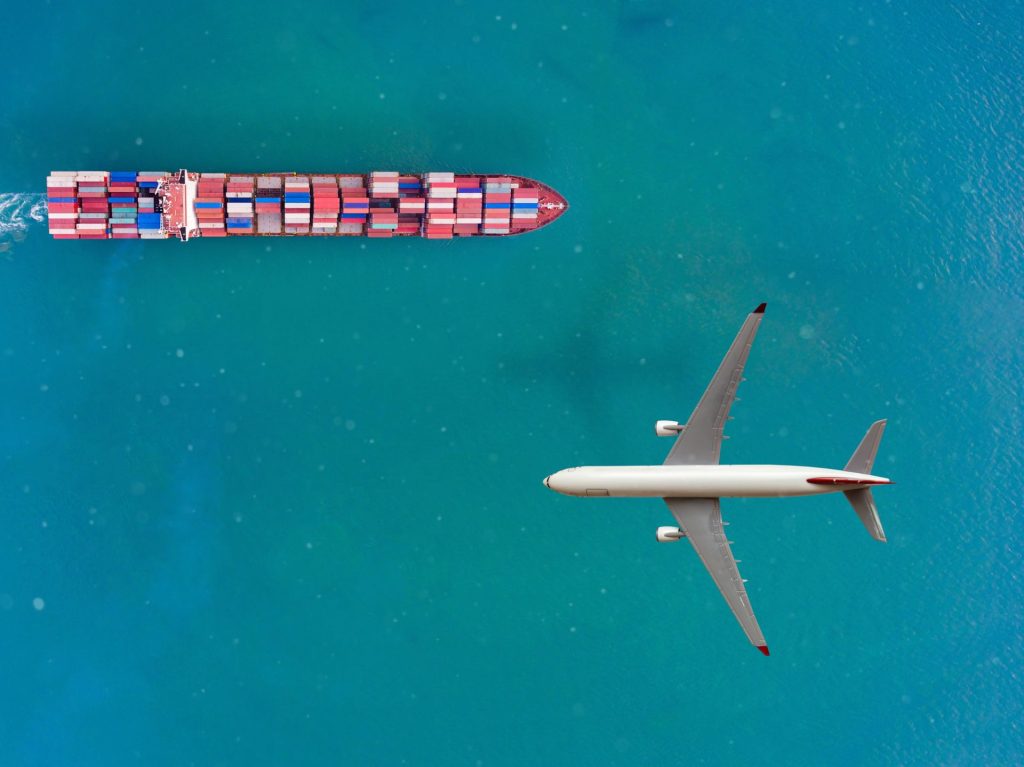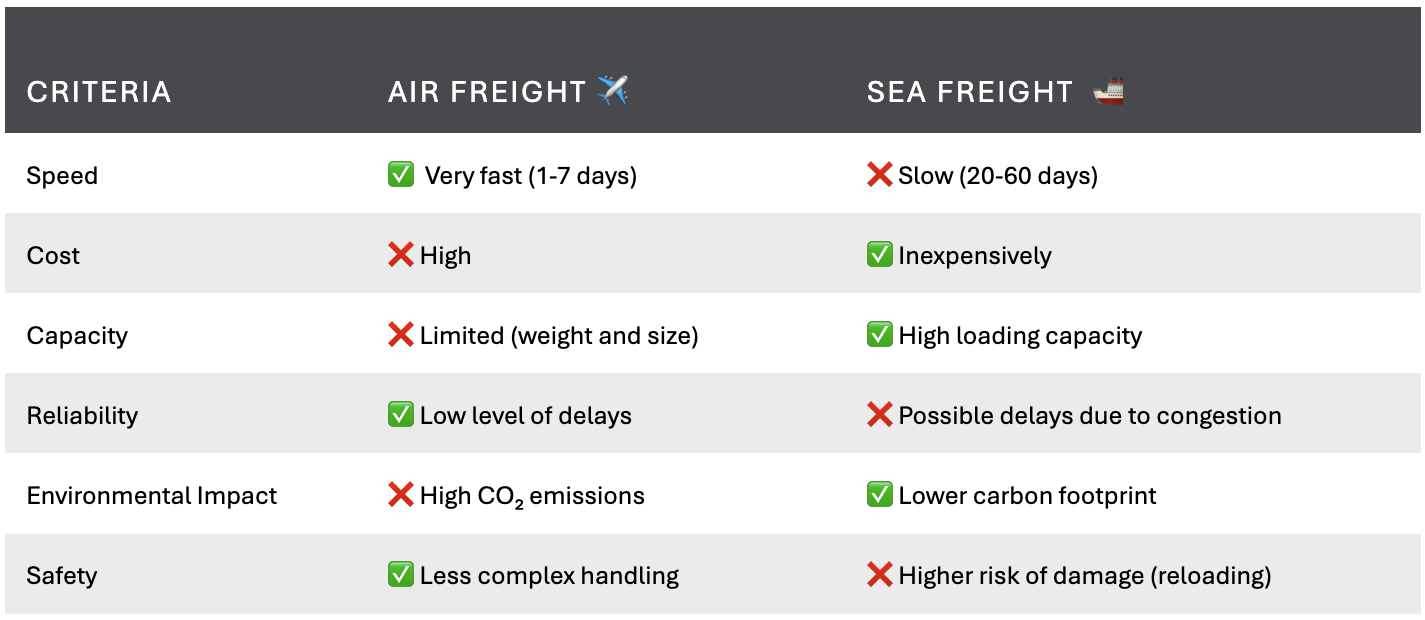Sea or air freight?
How the decision affects your business.
Do you want to send your goods out into the big wide world? Then you’re faced with an exciting decision: sea or air freight? Both options have their own superpowers – and a few weaknesses too. In this article, we’ll tell you when each option will optimise your shipping so that you can perfectly combine costs, speed and reliability.

Air freight: fast, safe and direct
When every second counts and your goods need to arrive safely, air freight is often the best choice. Sure, it’s usually a bit more expensive, but for certain products and situations, it’s simply unbeatable. Let’s take a look at the pros and cons together.
Advantages of air freight
1. Lightning-fast:
Forget about waiting times of weeks! Air freight gets your shipment to its destination in a few days or even hours. Perfect for urgent shipments.
2. Utter reliability:
Flight schedules are punctual and reliable. This allows you to plan your logistics precisely.
3. Less stress for your goods:
Fewer reloading steps mean less risk of damage or loss.
4. The whole world as your destination:
Whether it’s a big city or an island, you can reach almost any place with air freight.
5. Lower storage costs:
Thanks to fast delivery, you can minimise your storage costs.
Disadvantages of air freight
1. High price:
Air freight is more expensive than sea freight, especially for heavy or bulky goods. This is because cargo space is limited.
2. Not everything fits on a plane:
There are restrictions on weight, size and certain products.
3. Not so environmental friendly:
Air freight causes more CO2 emissions than sea freight.
When is air freight the right choice?
- If it’s urgent or your products are perishable (e.g. medicines, food).
- For just-in-time deliveries or events.
- For valuable goods that need to arrive quickly and safely (e.g. technology, jewellery).
- If your destination is difficult to reach (e.g. islands, countries without a coast).
Sea Freight: large, affordable and green(er)
When you’re dealing with really large quantities, sea freight is often your best friend. Not only is it cost-saving, but also surprisingly green – even if your goods are on the high seas for a bit longer.
Advantages of sea freight
1. Smart shopper disptach:
Sea freight is super cheap, especially for large quantities.
2. Endless space:
Containers offer plenty of space for large shipments.
3. Better for the environment:
Fewer CO2 emissions than air freight.
4. Flexible and versatile:
From huge machines to sensitive refrigerated goods, sea freight makes it possible.
Disadvantages of sea freight
1. Long waiting times:
It can take 15 to 60 days for your goods to arrive, depending on the country of origin and the sea routes taken.
2. Unforeseen delays:
Weather, traffic jams, customs problems or detours can delay delivery.
3. Complex transport:
Many parties involved and frequent reloading increase the risk of errors and damage.
When is sea freight the right choice?
- For bulky or heavy goods (e.g. furniture, machinery).
- When price is more important than speed.
- For shipments that are not urgent.
- For large quantities to save costs.
Sea or air freigh? A quick comparison

Conclusion: What’s best for you?
The choice depends on your priorities. Air freight is fast and safe, while sea freight is cheaper and more environmentally friendly.
- Air freight: When speed is of the essence (perishable goods, emergencies, events).
- Sea freight: When you want to save costs (large quantities, non-perishable goods).
Final tip:
Combine both options! Air freight for urgent items, sea freight for the rest. This way you save time and money.
👉 For example: part of the goods by air freight for a quick start to the sales season, the rest by sea freight for low-cost reorders.
Still unsure?
We can help! At LetMeShip you will find the best shipping method for your business.
👉 Contact us and optimise your logistics!

